Zebra Jasper
Zebra Jasper is a unique and striking variety of jasper, a type of opaque, microcrystalline quartz known for its colorful and patterned appearance. This stone is characterized by its distinct black and white stripes, which resemble the pattern of a zebra, hence its name. It is highly valued in the metaphysical community for its grounding and balancing properties, as well as in the jewelry industry for its bold and attractive appearance.
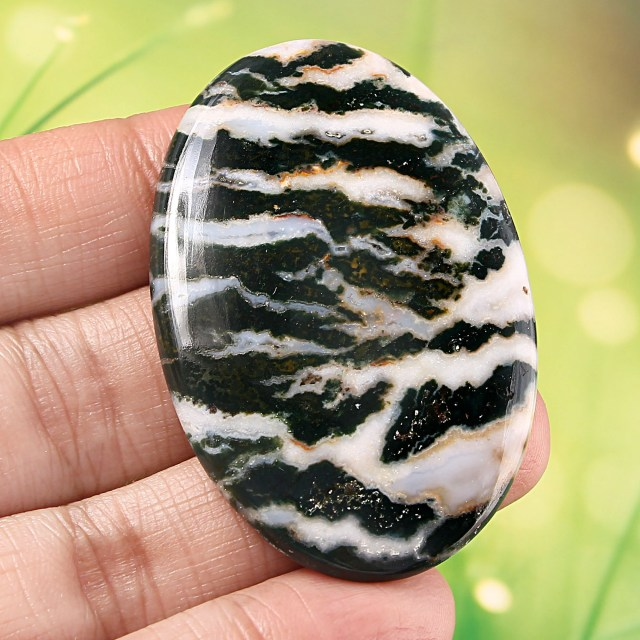
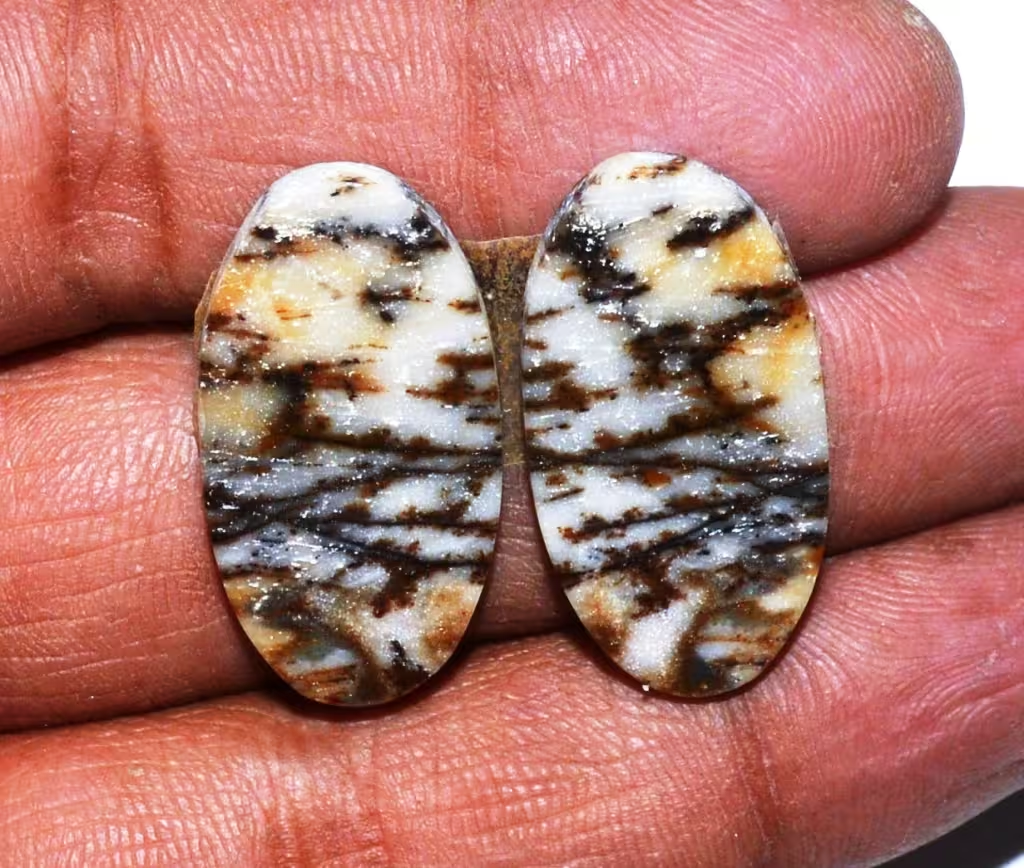
Origin and Discovery of Zebra Jasper
Zebra Jasper, like many types of jasper, has been used since ancient times for both decorative and practical purposes. The exact origin of Zebra Jasper as a recognized and distinct variety is not clearly documented, but it is believed to have been known and used by various cultures for centuries. Ancient civilizations, such as the Egyptians and Greeks, used jasper in amulets, seals, and other ornaments, appreciating its beauty and durability. The striking patterns of Zebra Jasper make it a standout among jaspers, leading to its specific identification and use in modern times.
Geological Composition and Formation Process
Zebra Jasper is a form of jasper, which is a microcrystalline variety of quartz (silicon dioxide, SiO₂). Its distinct stripes are caused by the presence of various impurities and the unique conditions under which it forms. The black bands typically contain iron oxides or other minerals that create the dark coloration, while the white or lighter areas are composed mainly of pure quartz.
Jasper forms through the process of silicification, where volcanic ash or fine sediment is cemented by silica-rich fluids. Over time, these materials solidify and crystallize, creating the dense, patterned stone known as jasper. The specific conditions that lead to the banded appearance of Zebra Jasper involve the rhythmic deposition of different materials over long periods, resulting in the characteristic zebra-like pattern.
Common Locations Where Zebra Jasper is Found
Zebra Jasper is found in various locations around the world, but some of the most notable sources include:
- South Africa: Known for producing high-quality Zebra Jasper with striking patterns.
- India: A significant source of various jaspers, including Zebra Jasper.
- Australia: Another key location where Zebra Jasper is mined, often characterized by unique and vivid patterns.
- United States: Zebra Jasper can be found in several states, including Oregon, where jasper deposits are relatively common.
These locations provide some of the finest examples of Zebra Jasper, which is then polished and used in various applications, from jewelry to ornamental stones.
Contents
- Physical Characteristics of Zebra Jasper
- Symbolism and Meaning of Zebra Jasper
- Uses of Zebra Jasper in Jewelry and Decoration
Physical Characteristics of Zebra Jasper
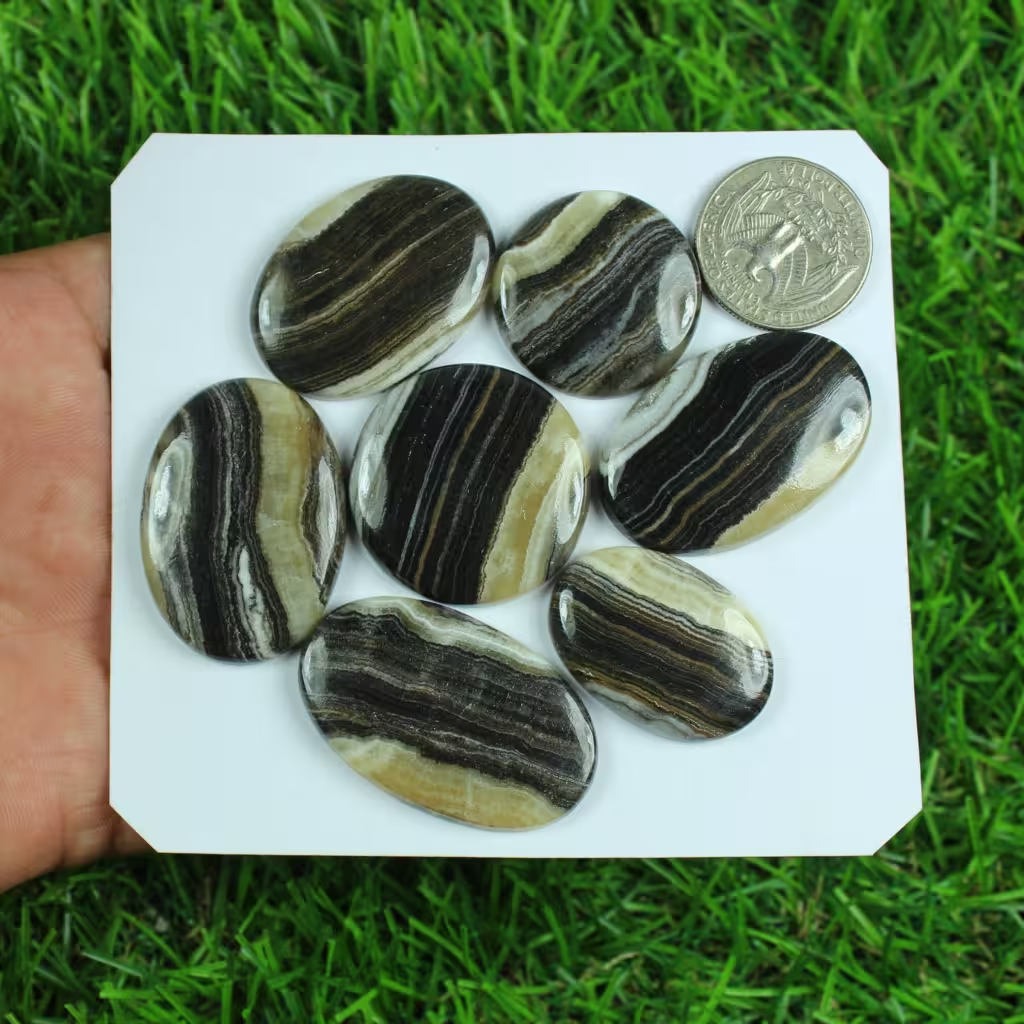
Appearance and Color Variations
Zebra Jasper is primarily recognized for its distinctive black and white striped pattern, reminiscent of a zebra’s coat. The alternating bands of color create a bold contrast that makes this stone particularly eye-catching. While the classic Zebra Jasper features stark black and white stripes, there can be variations in color. Some specimens may exhibit shades of brown, beige, or even reddish tones, depending on the mineral content and impurities present during its formation.
The black stripes are usually composed of materials like iron oxides or other dark minerals, while the white or lighter bands are predominantly made up of quartz or other silica-rich minerals. The intensity of the colors and the sharpness of the stripes can vary from stone to stone, with some displaying more blended or muted transitions between the bands.
Texture and Patterns Unique to Zebra Jasper
Zebra Jasper, like other jasper varieties, is known for its smooth and polished texture when cut and finished. It has a dense and opaque structure, which gives it a solid feel and a glossy surface when polished. The stone typically has a uniform hardness, rating around 6.5 to 7 on the Mohs scale, making it durable and suitable for various uses, including jewelry and decorative items.
The patterns in Zebra Jasper are unique to each piece, with no two stones being exactly alike. The stripes can range from thick and bold to thin and intricate, and they may run in parallel lines or in more irregular, wavy formations. This natural variation in patterning is part of what makes Zebra Jasper so appealing to collectors and artisans.
Comparison with Other Types of Jasper Stones
Zebra Jasper stands out among other types of jasper due to its striking black and white coloration. In comparison:
- Picture Jasper: Typically features brown, tan, and beige tones with landscape-like patterns, resembling natural scenes or abstract designs.
- Red Jasper: Known for its deep red coloration, often with veins or spots of other minerals, giving it a rich, earthy appearance.
- Ocean Jasper: Exhibits a wide range of colors, including greens, blues, pinks, and whites, often with orbicular (circular) patterns or wavy banding.
- Brecciated Jasper: Characterized by its “broken” appearance, with fragments of different jaspers cemented together by a contrasting matrix, often red or brown.
Compared to these varieties, Zebra Jasper’s monochromatic palette and linear patterns make it distinct. While many jaspers are valued for their multi-colored and often chaotic patterns, Zebra Jasper is appreciated for its orderly and high-contrast design. This makes it a popular choice for those who prefer a more minimalist or modern aesthetic in their stone collections or jewelry.
Symbolism and Meaning of Zebra Jasper

Historical and Cultural Significance of Zebra Jasper
Zebra Jasper has been valued throughout history, not only for its striking appearance but also for its perceived metaphysical properties. In various cultures, jaspers in general were considered stones of protection and stability. They were often used in amulets, talismans, and sacred objects, believed to ward off negative energies and provide physical and spiritual protection.
Zebra Jasper, with its distinctive black and white pattern, has been particularly associated with balance and harmony. The contrast of colors symbolizes the duality of life—light and dark, yin and yang, masculine and feminine—and the need to maintain equilibrium between these opposing forces. This stone was historically thought to help the wearer find balance in their life and navigate challenges with a sense of groundedness and calm.
Symbolism in Various Cultures and Belief Systems
In metaphysical traditions, Zebra Jasper is often referred to as a stone of grounding and protection. It is believed to help align and balance the body, mind, and spirit, making it easier to stay centered and focused. Here’s how it is viewed in various belief systems:
- Native American Beliefs: Many Native American tribes considered jasper stones to be powerful sacred stones, often used in rituals and ceremonies to connect with the Earth and its energies. Zebra Jasper, with its grounding qualities, would have been valued for its ability to stabilize and harmonize energy.
- Eastern Traditions: In some Eastern spiritual practices, the black and white stripes of Zebra Jasper are seen as representing the balance between yin and yang energies. This duality is central to many Eastern philosophies, where harmony between opposing forces is seen as essential for spiritual growth and well-being.
- New Age and Modern Spirituality: In contemporary metaphysical circles, Zebra Jasper is often used in meditation and healing practices. It is believed to help bring clarity to chaotic situations and to foster a sense of inner peace. The stone is also thought to enhance endurance and determination, encouraging the wearer to remain committed to their goals and dreams.
- Symbolism of Black and White: Across many cultures, the black and white pattern of Zebra Jasper symbolizes the integration of opposites—light and darkness, good and evil, life and death. This symbolism is deeply rooted in human consciousness, representing the idea that all aspects of existence are interconnected and that balance is key to a harmonious life.
While these interpretations of Zebra Jasper’s symbolism are not based on scientific evidence, they reflect the stone’s long-standing role in human culture as a symbol of balance, protection, and harmony. Whether used in ancient rituals or modern spiritual practices, Zebra Jasper continues to be cherished for its symbolic meanings.
Uses of Zebra Jasper in Jewelry and Decoration
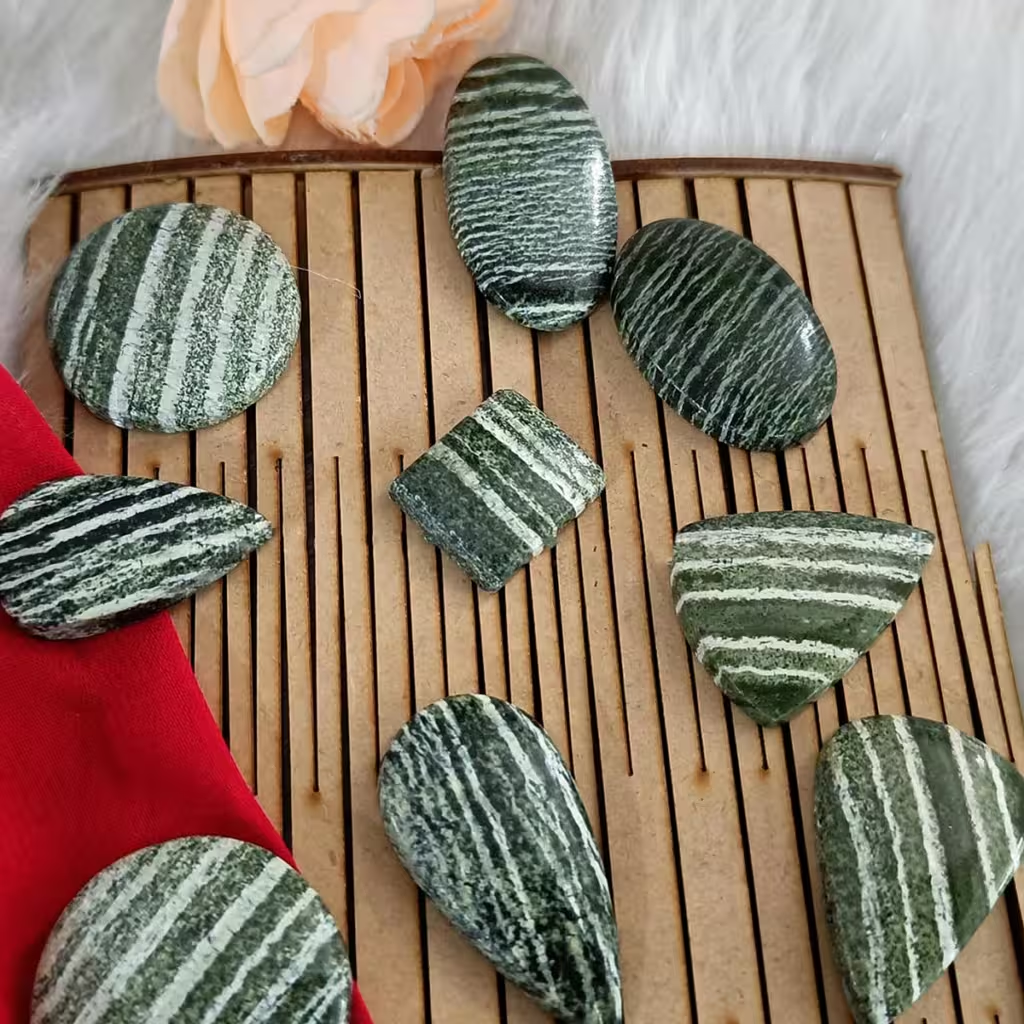
Jewelry Applications
Zebra Jasper is a popular choice in jewelry-making due to its bold, contrasting patterns and durable nature. Its versatility allows it to be crafted into various types of jewelry, including:
- Beaded Jewelry: Zebra Jasper is often cut into beads, which are then strung together to create necklaces, bracelets, and anklets. The striking black and white patterns of the beads make for eye-catching pieces that can be worn casually or dressed up.
- Cabochons: The stone is frequently cut and polished into cabochons—smooth, rounded stones without facets—that are used in rings, earrings, pendants, and brooches. The polished surface highlights the natural patterns, making each piece unique.
- Statement Pieces: Due to its distinctive appearance, Zebra Jasper is ideal for statement jewelry pieces. Large pendants, bold rings, and chunky bracelets made from Zebra Jasper can serve as conversation starters and focal points in an outfit.
- Men’s Jewelry: The monochromatic color scheme of Zebra Jasper makes it particularly appealing in men’s jewelry, where it is used in cufflinks, tie pins, and rings. Its grounding energy and bold look resonate well with masculine designs.
Decorative Uses
Beyond jewelry, Zebra Jasper is also widely used in various decorative applications:
- Home Décor: Zebra Jasper can be crafted into decorative objects like vases, bowls, and sculptures. These items add a touch of natural beauty and elegance to interiors, with the stone’s patterns providing a striking visual element.
- Carvings: Skilled artisans often carve Zebra Jasper into figurines, animal shapes, or symbolic objects. These carvings are prized for their aesthetic appeal and are often used as decorative pieces in homes or offices.
- Tumbled Stones: Zebra Jasper is also commonly tumbled—smoothed and polished—into small stones that are used for decorative purposes. These tumbled stones can be displayed in bowls, used in crystal grids, or carried as pocket stones.
- Tile and Mosaic Work: In some cases, Zebra Jasper is cut into tiles or small pieces for use in mosaic art or as inlays in furniture and countertops. The natural stripes of the stone create dynamic patterns that can enhance the visual appeal of any surface.
- Meditation and Healing Spaces: Zebra Jasper is often incorporated into the design of meditation spaces or healing rooms, where it is believed to contribute to a calming and balanced environment. It may be placed in the center of a room or used as part of an altar setup.
Zebra Jasper’s unique combination of beauty and durability makes it a favorite in both the jewelry and decorative arts, providing both aesthetic value and, for those who believe in its metaphysical properties, a sense of balance and grounding energy.
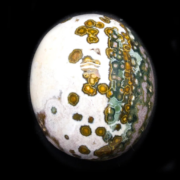
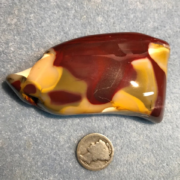

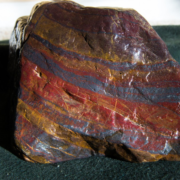
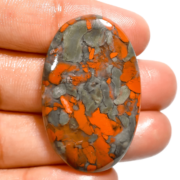
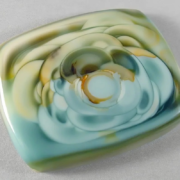


Leave a Reply
Want to join the discussion?Feel free to contribute!